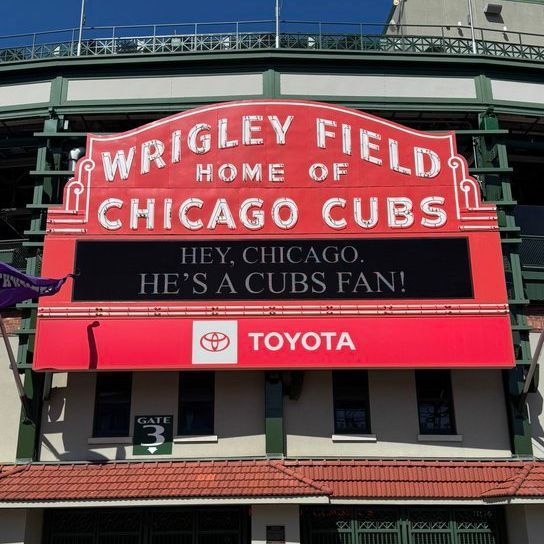NEW YORK — Mark Vientos calls himself a fastball hitter. His numbers against them are down this season, but the sample is small. They will pick up, he says.
History supports his confidence. Vientos has long pummeled fastballs. In the meantime, Vientos is also trying to do something else.

Improve against offspeed and breaking pitches. Advertisement “It’s very important to me,” Vientos said. “The league is heavy offspeed.
Pitchers are really afraid to throw fastballs. They’d rather throw their offspeed pitch. They won’t challenge you with fastballs.
So it’s important to hit the offspeed.” Vientos, the New York Mets’ third baseman, carried that idea into Tuesday’s game against the Philadelphia Phillies and their starter Cristopher Sanchez, known for his go-to changeup. With two outs and a runner on second base in the first inning, Vientos worked a full count by laying off tough pitches and fouling off fastballs.
He seemed ready for the changeup. On the eighth pitch of the at-bat, Sanchez threw a changeup at the bottom of the strike zone. Vientos didn’t miss it.
He hit an RBI double for the Mets’ first run in a game they never trailed. Swaggy starts us! @MarkVientos_5 | #LGM pic.twitter.
com/IRhscitqTR — New York Mets (@Mets) April 22, 2025 “Really good at-bat,” manager Carlos Mendoza said after New York beat the Phillies 5-1 for its sixth straight win. After a slow start, Vientos is heating up and resembles the guy who hit 27 home runs with a .838 OPS last season.
Despite a breakout season in 2024, there was room to grow; while he hit .326 against fastballs, he swung and missed around 40 percent of the time against anything else. Coming through against Sanchez’s changeup showed progress.
Vientos’ situation highlights a larger story that is coming into focus. Among all teams, the Mets’ batters see the fewest fastballs, according to Sports Info Solutions. At 43.
1 percent of the time, the Mets narrowly edge the Cleveland Guardians (43.2 percent) for the fewest fastballs faced. It’s too early for most trends.
But after observing how seven different pitching staffs have operated against the Mets, a clear pattern has emerged, Mets co-hitting coach Jeremy Barnes said. Advertisement “We are going to get a lot of spin,” Barnes said. “We’re a pretty good fastball-hitting team.
It’s no shock to us. We just have to prepare.” In order to see more fastballs, New York needs to improve against non-fastballs.
For instance, Sports Info Solutions gives the Mets negative value scores against sliders and curveballs, placing them in the bottom half of the league against both pitches (they rank near the middle against changeups). That’s a team-wide issue; a focus on offspeed pitches is a part of every hitter’s routine, Barnes said. As a lineup, the Mets want to be versatile in how they can hit.
It’s not specific to Vientos, but he, perhaps more than anyone in the Mets’ lineup, epitomizes what’s at stake. Whether Vientos, 25, can replicate his success from his breakout 2024 season goes a long way in determining just how deep the Mets’ lineup is. He batted fourth Tuesday, behind the Mets’ trio of stars, Francisco Lindor, Juan Soto and Pete Alonso.
After going 1-for-3 with a double and a walk on Tuesday, Vientos is hitting .173 with two home runs. The numbers are getting better.
Before missing the previous two games with mild groin discomfort, Vientos was 7 for his last 26 (.269 batting average), with both home runs. Throughout the first month, though, Vientos enthused Mets officials with his swing decisions regardless of results.
Despite Vientos’ eye-opening production last season, his strikeout rate and chase rate were too high. This season, both rates are considerably better. Starting in spring training, Mets officials applauded Vientos for taking, for instance, 2-1 sliders down and away.
“Laying off those sliders just outside the plate is going to be the separation between how good he can be,” Mets co-hitting coach Eric Chavez said. There’s a give and a take, Chavez added. A fastball hitter thinks the fastball is coming out of a pitcher’s hand and chases a slider.
A more complete hitter goes to the batter’s box wanting to lay off certain pitches, and, sometimes, as a result of wanting to make a read on an offering, is late on a fastball. Advertisement That may explain why Vientos’ numbers are down early against fastballs, Chavez said. But when it comes to Vientos, Chavez takes that tradeoff.
“I’d rather him be late on a heater instead of chasing that 2-1 slider because in the long run, he’s always going to get to that heater; it’s in his back pocket,” Chavez said. “He’s in this transformation of becoming just a really good hitter and not just a fastball hitter.” The Mets’ quest to be better against non-fastballs casts Vientos in a major role.
He says he’s up for it. “That’s what I want,” Vientos said. (Photo of Mark Vientos hitting an RBI double: Wendell Cruz / Imagn Images).
Sports

Mark Vientos' smarter approach sets tone as Mets topple Phillies: 'Really good at-bat'

Vientos’ numbers against fastballs are off to a slow start, but below the surface he's maturing as a hitter.















